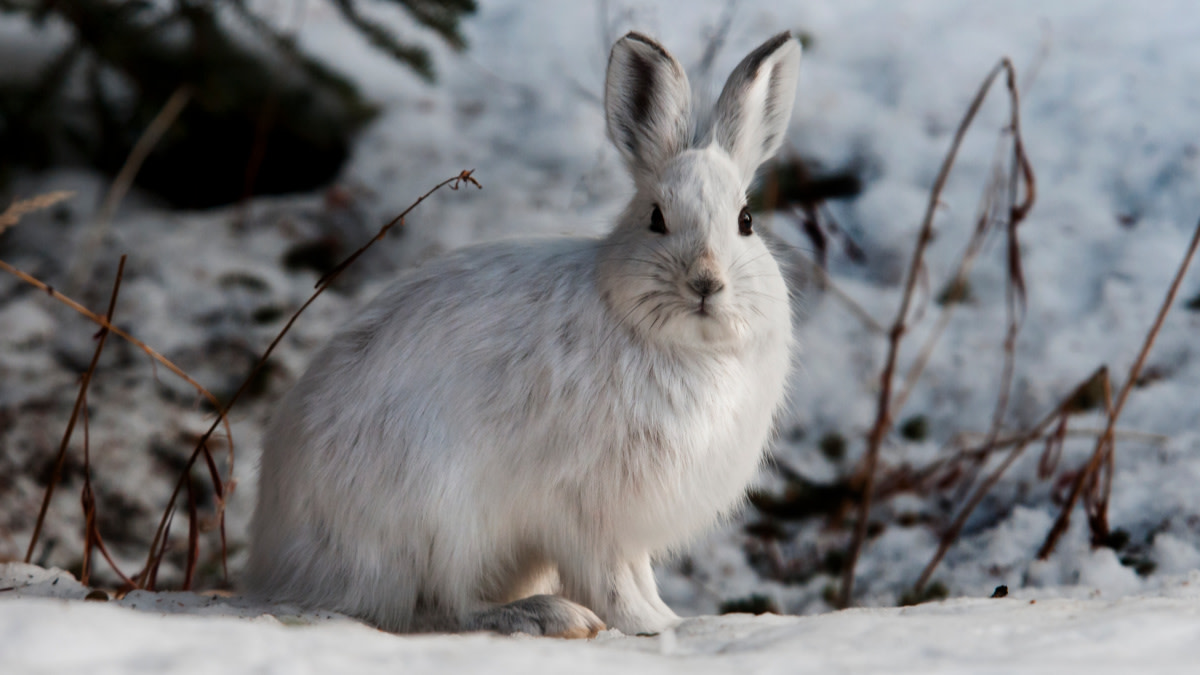
As waterfowl and upland seasons close around the country, there may be no better winter small game pursuit than snowshoe hares. For starters, unlike their cottontail cousins, they don’t burrow. They live aboveground all year long, which means that even if you’re stuck in a polar vortex and everything else is holed up, snowshoe hares will still be accessible and huntable.
You’ll probably also appreciate just how fun it can be to target snowshoe hares in the winter woods. Don’t expect an easy hunt, however. Hares and rabbits are on the menu for nearly every critter with pointy teeth or sharp talons, so they’ve seen every predatory trick in the book. To bag a few, you’ll need to get creative and think like a predator yourself. Here are three ways to do just that.
Reading Hare Cover
If you’re not close to conifers and a bunch of undergrowth, you’re probably not around snowshoe hares. You can read aerial photography and identify stands of pine trees near recent logging activities to pinpoint hare hot spots. This is important because they only occupy certain types of cover, and in the big woods of the north country, you could put on a lot of miles hiking through habitat that holds plenty of wildlife, just no snowshoes.
If you want to be an efficient hare hunter, do your homework. Snowshoes feast on undergrowth but rely on overhead cover to avoid aerial predators. This gives them a place to feed and travel, and is where they’ll be most comfortable. Before your hunt, pick out some areas that check these boxes and then look for tracks, trails, and droppings when you get there. E-scouting with quick sign reading will cut down on the time spent slogging through unproductive woods.
Hare Drives
Bill Marchel is a Brainerd, Minnesota, resident, wildlife photographer, and snowshoe fanatic. He and his buddies actually target the oversized hares with archery tackle, which means he needs to have a clear understanding of escape routes and travel patterns. According to Marchel, this involves reading hare trails and factoring in terrain features.
“Hares don’t like to travel in the open, so we try to execute short, circular drives using roads or fields as barriers,” Marchel said. “Since hares use a maze of runways for travel, we position blockers along these trails and then try to push the cover to get them moving.”
Hares will often stay committed to their trails when bumped, but usually peel off when they see a blocker. If the blocker doesn’t get a shot, that means the driver is still in the game. Hares are notorious for circling back, which works great for eluding a coyote or fox, but plays right into a hunter’s hand. If a drive fails, reconfigure your setup and beat the brush again.
The Snowshoe Sneak
If you want to test your spot-and-stalk skills on wary, well-hidden critters, grab your .22 or .17 and head out on a snowshoe sneak. There might not be another game animal that can so effectively hide in plain sight as a white snowshoe in the northern, wintry woods.
This means you have to slip through their habitat quietly enough to not bust them, and then keep your eyes scanning underbrush for the slightest movement or snow-colored silhouette. This is some of the most fun you can have on a winter afternoon, and it’s not unlike sight fishing in that you’ll probably experience a dozen heart rate spikes on false-positives before your game eye is calibrated. Soon you’ll pick up on slight details that make all the difference, like the black, shiny eye of a hare which, is often what I notice first.
Pay attention to patches of forest dappled with sunlight and walk them with your eyes. These are favorite afternoon hangouts for snowshoes. And no matter what you do, move slowly. Snowshoes occupy a home range that will encompass about 20 to 30 acres, but they’ll spend most of their time on a core area of just three or four acres. This is where the sign will be heaviest, and where you should move the slowest. Creep your way through one of these spots and you’ll be stuffing your vest with plenty of white fur and dark meat.
Feature image via Wiki Commons.





